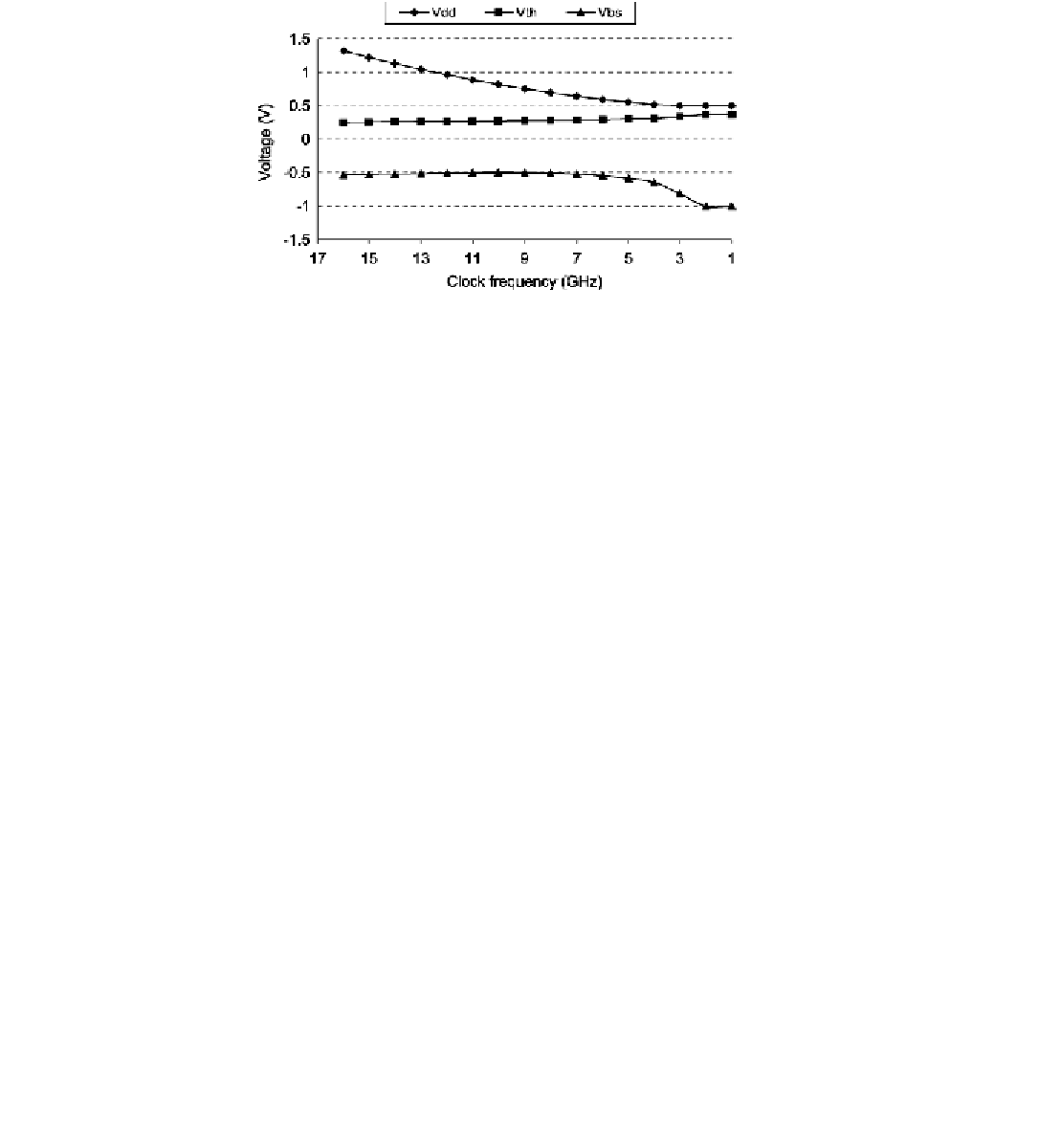Information Technology Reference
In-Depth Information
FIGURE 5.19:
Combined DVS and ABB for an embedded processor with hard real-time constraints.
Reproduced from [
231
]. Copyright 2005 IEEE.
Finally, Yan, Luo, and Jha study the application of combined DVS and ABB in
heterogeneous distributed real-time embedded systems [
231
]. In analogy to the work
of Martin et al., they determine the lowest frequency of operation that can satisfy the
real-time constraints of an embedded system using the worst-case analysis. In contrast
to the previous work, the deadlines are known and are hard real time.
Given the required operation frequencies, Yan et al. show that both
V
dd
and
V
T
have to scale to obtain the minimum power across the range of frequencies for a 70 nm
technology ( Figure 5.19). Initially,
V
dd
is scaled as this yields the most power reduction
for the given frequencies. However, at some point
V
dd
scaling reduces dynamic power
to the point where leakage starts to dominate, thus triggering ABB (scaling the body-
to-source bias
V
bs
). Yan et al. conclude their study by presenting a heuristic on-line
algorithm that can estimate the proper
V
dd
and
V
bs
for a list of tasks with a slack in
their execution schedule.
5.4.2 Static Approaches
In the static, multiple-
V
T
approaches, transistors on the same die are manufactured as either
high-
V
T
or low-
V
T
(by varying the channel-doping profile, or the oxide thickness, or the channel
length). These are referred to as multi-threshold voltage CMOS (MTCMOS) technologies
with the appropriate libraries providing devices with different
V
T
. The designer or architect
selects where the high-
V
T
or low-
V
T
devices go at design time and the chip is manufactured
accordingly. There are two major design methodologies in using multiple threshold voltages.
The first methodology is to use
low
-
V
T
devices (high-performance, high-leakage)
in the performance-critical paths of a design and use
high-V
T
(lower-performance,

Search WWH ::

Custom Search